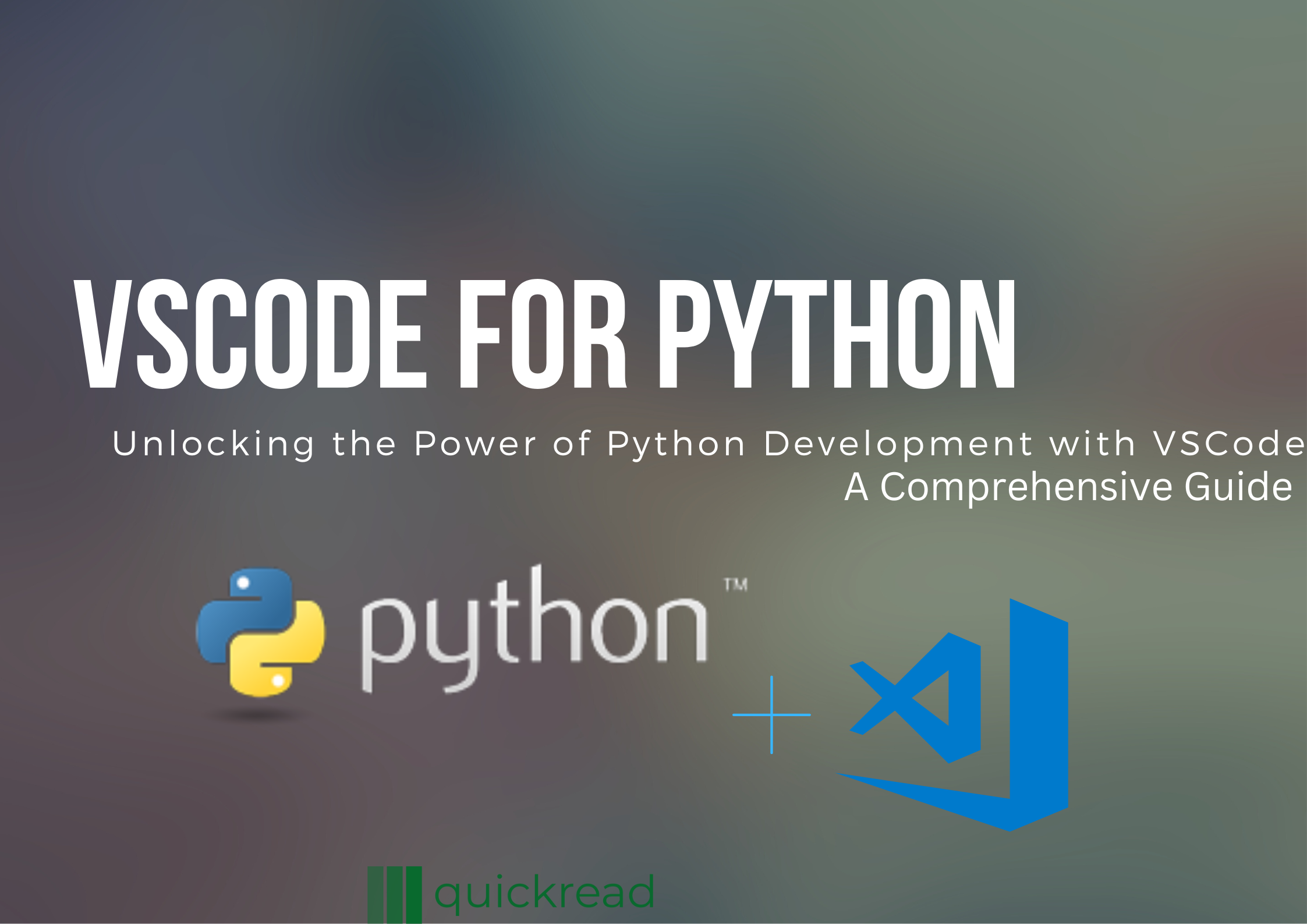Introduction:
In this article, we will explore the capabilities of VSCode for Python development and discuss how it can enhance your coding experience. Visual Studio Code, commonly known as VSCode, has emerged as a powerful and popular code editor among developers across various programming languages. When it comes to Python development, VSCode offers a comprehensive set of features, extensions, and customization options that make it an excellent choice for both beginners and experienced developers.
- Installation and Setup: Getting started with VSCode for Python is a breeze. First, you need to install VSCode from the official website (https://code.visualstudio.com/). Once installed, you can customize the editor according to your preferences by installing relevant extensions and configuring settings tailored for Python development. Some popular Python-related extensions include Python, Python Docstring Generator, Pylance, and autopep8.
- Integrated Terminal and Interactive Python Shell: VSCode for python comes with an integrated terminal that allows you to execute Python code without leaving the editor. This feature enables you to run scripts, test code snippets, and debug your applications seamlessly. To open the integrated terminal, you can use the shortcut Ctrl+` (or View → Terminal). Here’s an example of executing a Python script:
print("Hello, world!")Additionally, you can open an interactive Python shell directly within the editor by selecting the Python Interactive option from the Command Palette. This provides an interactive environment for experimenting with code and exploring data.
- Intelligent Code Editing: VSCode for python offers an array of features to enhance your productivity while writing Python code. The Python extension provides auto-completion, code snippets, and intelligent suggestions, significantly speeding up your development process. It also supports code refactoring, allowing you to easily restructure and optimize your codebase. Here’s an example of using auto-completion:
# Importing the math module
import math
# Using auto-completion for math functions
math.sq # After typing "math.sq", VSCode suggests "math.sqrt()"
# Using code snippets for quick code generation
def greet(name):
print("Hello, " + name + "!")
# Typing "greet" and pressing Tab will generate the function structure automatically
With Pylance, a language server for Python, you can enjoy advanced type checking, code navigation, and documentation generation. Pylance provides real-time suggestions and detects errors before runtime.
- Debugging Capabilities: Debugging is an essential aspect of software development, and VSCode excels in this area. It provides a powerful debugger that allows you to set breakpoints, step through code, inspect variables, and analyze runtime behavior. To start debugging, you can click on the Debug icon in the sidebar (or press Ctrl+Shift+D). Here’s an example of setting breakpoints and stepping through code:
def add_numbers(a, b):
result = a + b # Set a breakpoint on this line
return result
x = 5
y = 3
z = add_numbers(x, y) # Debugging will stop at the breakpoint
print(z)The debugging experience is further enhanced by integration with popular Python debuggers like Pylance and PySnooper. You can easily debug local scripts, unit tests, and even remote applications, all within the familiar VSCode environment.
- Version Control and Collaboration: VSCode seamlessly integrates with Git, making it effortless to manage version control directly from the editor. You can view code changes, commit files, and resolve merge conflicts, all with Git’s powerful functionalities. The Git extension in VSCode provides a sidebar where you can perform all Git-related operations. Additionally, VSCode supports collaboration through Live Share, enabling multiple developers to work on the same project simultaneously, regardless of their physical location. This feature facilitates pair programming, code reviews, and real-time collaboration.
- Testing and Test Framework Integration: Python developers rely heavily on testing frameworks to ensure code quality. VSCode for python offers extensive support for popular Python testing frameworks such as pytest, unittest, and nose. With the help of appropriate extensions, you can run tests directly from the editor, view test results, and navigate to the corresponding code. This tight integration with testing frameworks enables you to adopt a test-driven development (TDD) approach and ensures that your code remains robust and error-free.
- Customization and Extensions: One of the standout features of VSCode is its extensibility. You can customize the editor to suit your preferences and workflow by installing extensions from the marketplace. VSCode offers a rich ecosystem of extensions specifically tailored for Python development. For example, you can install the Python Docstring Generator extension to generate docstrings automatically. From linters and formatters to data science tools and machine learning frameworks, you can find extensions that cater to virtually every Python-related requirement. This extensibility allows you to transform VSCode for python into a powerful IDE for Python development.
Conclusion:
Visual Studio Code has gained immense popularity among developers due to its versatility, performance, and extensive ecosystem. Its robust features, intelligent code editing capabilities, seamless integration with version control systems, and excellent support for testing and debugging make it an exceptional choice for Python development. Whether you are a beginner or an experienced developer, VSCode for python provides a streamlined and productive environment that can significantly enhance your Python coding experience. So, give it a try, explore its features, and unlock the full potential of Python development with Visual Studio Code.


